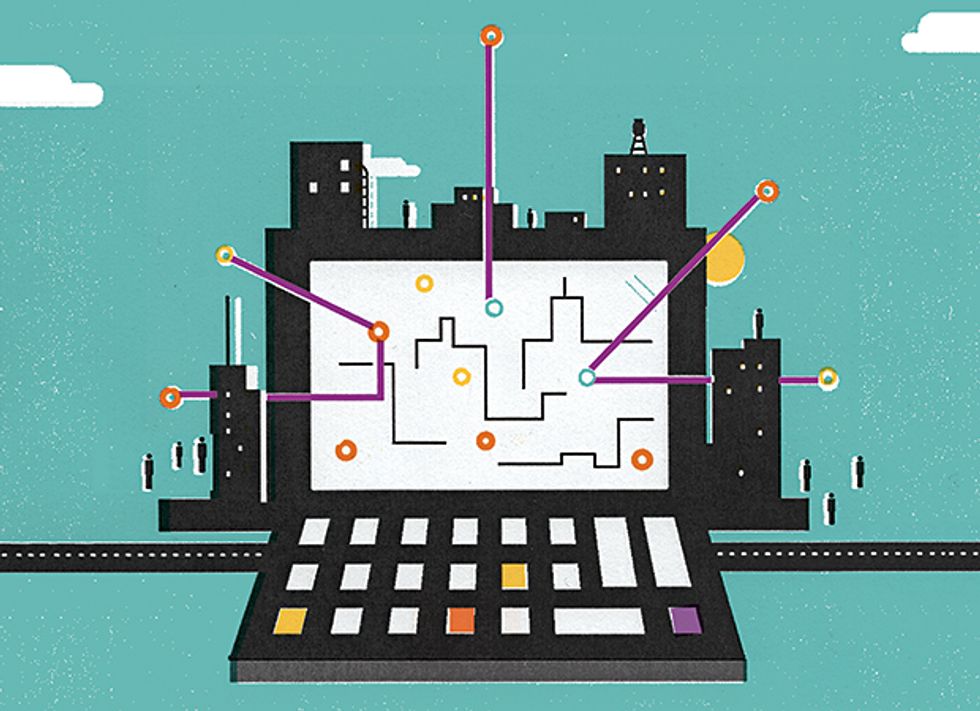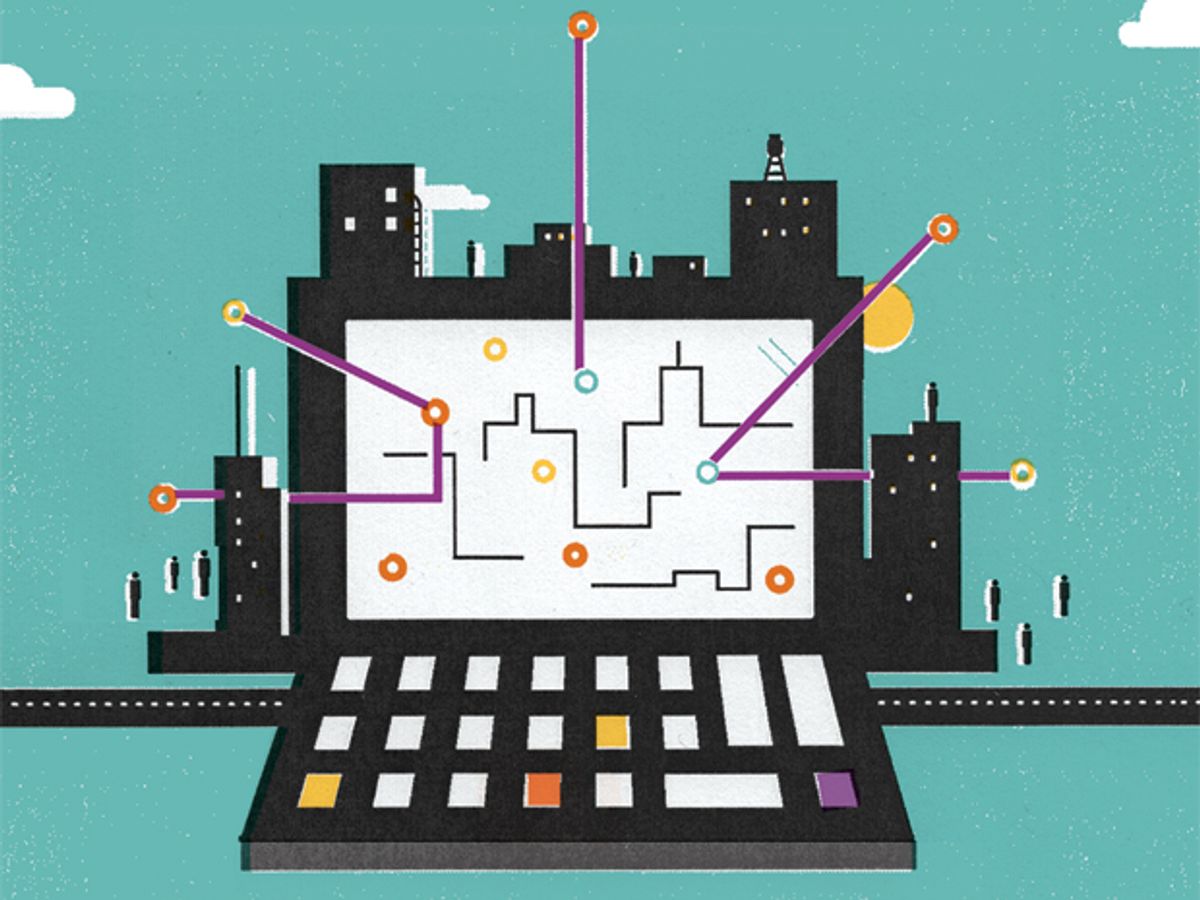As in all Utopias, the right to have plans of any significance belonged only to the planner in charge.
Jane Jacobs, The Death and Life of Great American Cities (1961)

In a previous column, I ran through some words and phrases associated with urban computing, where the city is a computer, the streetscape is the interface, you are the cursor, and your smartphone is the input device. This is the user-based, bottom-up version of the city-as-computer idea, but there’s also a top-down version, which is systems-based. It looks at urban systems such as transit, garbage, and water and wonders whether the city could be more efficient and better organized if these systems were “smart.” That is, if we applied principles of information technology and connectivity to the various processes that make up the urban infrastructure, we would end up with a smart city.
The need for more urban smarts seems obvious: Cities have finite (and shrinking) budgets, and the resources that make a city run—including water, energy, clean air, and land—are precious. So the move from the current urban environment to the digital city includes upgrading components and retrofitting so-called smart technologies. For example, many urban homes have had their gas and electrical meters upgraded to smart meters that enable not only remote monitoring and reading but also smart pricing (or time-of-use pricing), where costs rise or fall depending on whether usage is on- or off-peak. On a larger scale, these newfangled meters are part of the smart grid, which uses real-time data and analytics to match energy production with demand, monitor equipment, and control supply.
Big data plays a big part in smart urbanism because city managers are starting to create a networked city that deploys digital sensors and other electronic infrastructure. These generate massive amounts of information not only on energy use but also on traffic, transit, and other civic data. The goal is the real-time city, which enables planners and administrators to make decisions and implement policies based on current data and trends. Call it city 2.0.
Eventually (so the blue-sky thinking of your average civic hacker goes), these sensors, monitoring devices, and other elements of urban technological infrastructure will cover almost every available public surface. The result will be the ubiquitous city (often shortened to u-city), where every urban system and resource will make its data available for monitoring, analysis, and control. This transphysical city will enable new services to be implemented seamlessly over the network or via the g-cloud (government cloud), a computing model sometimes called city-as-a-service.
The ultimate smart city is one that’s built from the ground up with civic tech goals in mind. The forerunner here is the Garden City model proposed in the late 19th century by Englishman Ebenezer Howard, which features parks, retail, residences, and industry organized in concentric circles. The modern equivalent of a built-from-scratch smart city is called a cyburg, and examples include Songdo in South Korea, Masdar City in the United Arab Emirates, and the proposed, pedestrian-only Great City in China. These cities are planned for efficiency and are wired for data and services—cityware—all controlled by an urban operating system. Citizen access to these services is networked and ubiquitous, thanks to the implementation of civic tech.
The problem with these soft cities (or e-cities) is that, like Howard’s Garden City, the benefits accrue only if the whole thing remains under the strict control of an overarching authority that dictates things such as land use and density. But, as urban critics such as Lewis Mumford, Jane Jacobs, and more recently Richard Sennett have pointed out, a city is almost by definition an organic entity that constantly changes and evolves. To define this aspect of urbanism as a bug that must be fixed strikes at the soul of the city, because it sees commercial and individual freedom as the problem, not the solution. And if the increasing ubiquity of networked monitoring devices—particularly CCTV cameras—is combined with databases and software that enable easy searching and analysis, then the time of the superpanopticon is nigh. That kind of city doesn’t sound very smart to me.
This article originally appeared in print as “The City as System.”
